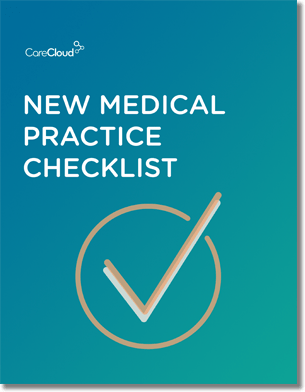In a survey conducted by the Medical Group Management Association (MGMA), 47.3 percent of respondents rated themselves ‘unsatisfied’ to ‘very unsatisfied’ with their current EMR system.
Why are they so displeased? Because EMRs, unlike EHRs, are not designed for collaboration between providers – a hallmark of Meaningful Use.
To elucidate the disparities between EMRs and EHRs, Power Your Practice has been parsing out the evolution of digital records in the “End of EMR” article series. In today’s conclusion, we present the four factors that make an EHR a better investment for your practice’s future.
Benefits of EHR
The CMS is incentivizing EHR systems for the improvement they can provide to patient care, but the benefits for healthcare providers are also very real.
According to a survey by MGMA, over 60 percent of physicians who have optimized their EHR system increased productivity and revenue. Here are some other ways EHR systems benefit both physicians and patients:
- Improved Collaboration – Information gathered by primary care providers can be easily shared and reviewed by specialists and other members of the care team, resulting in less duplicate testing, lower costs of care, and better outcomes.
- Continuity of Care – EHRs can travel, so if a patient moves, changes providers, or is admitted to an emergency room, a complete, up-to-date health record will be instantly accessible to the physician through a health information exchange (HIE). This prevents unnecessary delays in treatment and reduces clerical work for staff on both ends.
- Practice Mobility – The ability for physicians to review labs, order tests, and submit prescriptions outside the office will allow greater freedom for doctors and increased speed of care for patients. Instead of waiting on faxes or couriers or rushing to get back to the office, physicians will have the ability to view records on a phone, tablet, or computer anywhere they have Internet access.
- Patient Engagement – Patients can log in to their own record and track trends, review lab results and get medication information – without having to contact their physician – through secure patient portals. A Harvard Medical School study surveyed over 37,000 patients and found that more than 90 percent were enthusiastic about online access to their medical information.
Getting patients more involved in their own health care has been shown to lead to better outcomes, which is why information sharing is one of the key components of Stage-1 of Meaningful Use. These incentive payments could significantly offset the cost of the necessary EHR upgrade, improve patient care and help practices avoid CMS penalties in the future.
Invest in EHR
While switching from paper to electronic records is an essential step to streamline and improve health care, the switch should be to an integrated EHR system instead of an archaic EMR system.
The EMR was an improvement over its predecessor, the paper record, but is now outdated compared to the functionalities of today’s EHR systems.
Physicians who don’t do their homework and are sold an EMR system lacking true interoperability will find it difficult to meet Meaningful Use requirements and most likely be forced to upgrade in the near future. It could be an extremely expensive mistake that will affect patient care as well as their practices’ bottom lines.
EMR limits what providers can do with the data they collect. An EHR system provides all the tools that practice will need to collect, manage and share data with the entire care team as well as the patient. Make the right choice and select a system that can grow with your practice, provide better care for your patients and get you paid for your efforts.
While changes in technology and health care spell the end of EMRs, it presents the perfect opportunity for EHRs to create a more connected healthcare experience.

Do you know what you need when setting up a new medical practice?



